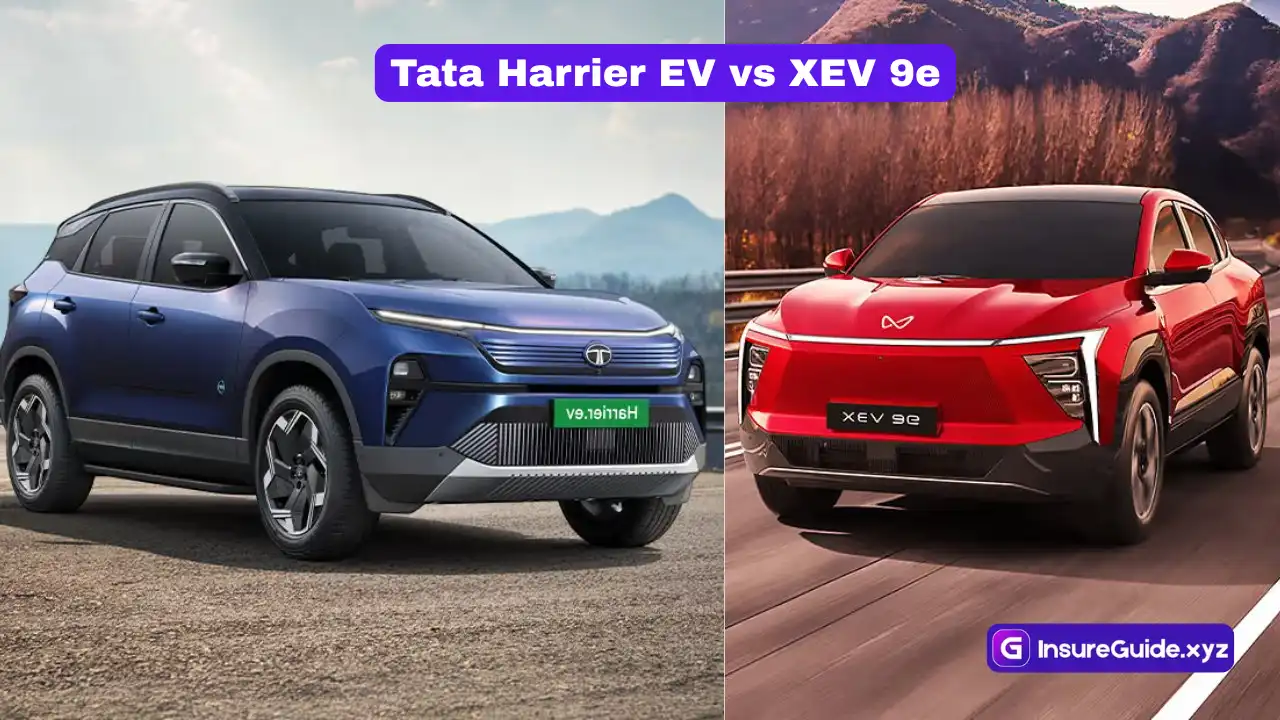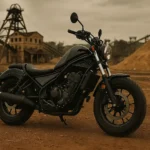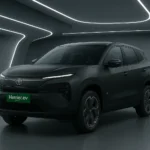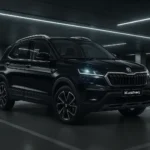Tata Harrier EV vs XEV 9e: Are you confused between the Tata Harrier EV and the Mahindra XEV 9e? Wondering which electric SUV offers better features, performance, and value for money?
Don’t worry — you’re in the right place! In this blog, we will compare both these powerful EVs, covering everything from specs and features to size and design.
By the end of this post, you will have a clear idea of which one suits your lifestyle and budget better. Let’s begin this head-to-head electric battle!
Design and Dimensions
When it comes to design, both the Tata Harrier EV and Mahindra XEV 9e have distinct characteristics that cater to different tastes.
Tata Harrier EV: This SUV retains the robust and muscular design of its diesel counterpart, enhanced with electric-specific features. The sealed grille and aerodynamic alloy wheels give it a unique appeal. Here are its dimensions:
- Length: 4,607 mm
- Width: 1,922 mm
- Height: 1,740 mm
- Wheelbase: 2,741 mm
- Boot Space: 502 liters
Mahindra XEV 9e: This model flaunts a futuristic coupe-like design, complete with a sleek front fascia and connected LED taillights, making it stand out on the road. Its dimensions are:
- Length: 4,789 mm
- Width: 1,907 mm
- Height: 1,694 mm
- Wheelbase: 2,775 mm
- Boot Space: 663 liters
Powertrain and Performance
Performance is a critical aspect when choosing an electric vehicle. Let’s see how these two stack up:
| Feature | Tata Harrier EV | Mahindra XEV 9e |
|---|---|---|
| Battery Options | 65 kWh, 75 kWh | 59 kWh, 79 kWh |
| Power Output | 396 PS (75 kWh) | 282 PS (79 kWh) |
| Torque | 504 Nm | 380 Nm |
| 0-100 km/h | 6.3 seconds | 6.8 seconds |
| Range (MIDC) | 622 km (AWD), 627 km (RWD) | 656 km |
| Fast Charging | 120 kW, 20-80% in 25 mins | 180 kW, 20-80% in 20 mins |
As you can see, the Tata Harrier EV offers more power and a quicker acceleration time, while the Mahindra XEV 9e has a more extensive range and faster charging capabilities. Both vehicles cater to different needs, depending on what you prioritize.
Features
Both the Tata Harrier EV and Mahindra XEV 9e come packed with features that enhance the driving experience. Here’s what each offers:
Tata Harrier EV:
- 14.53-inch Neo QLED touchscreen infotainment system
- 540-degree surround view camera with Transparent Mode
- Dual-zone climate control and wireless charging
- Advanced driver assistance systems (ADAS) with over 20 features
- Summon Mode for remote parking
Mahindra XEV 9e:
- Triple 12.3-inch digital display dashboard
- Panoramic sunroof with ambient lighting
- 16-speaker Harman Kardon sound system with Dolby Atmos
- Level 2+ ADAS suite with 7 airbags
- Auto parking assist and augmented reality head-up display
Safety Features
Safety is a top concern for many buyers, and both models come equipped with several safety features.
Tata Harrier EV:
- 7 airbags, including a knee airbag
- Electronic Stability Program (ESP) with i-VBAC
- Hill Hold Assist and Hill Descent Control
- Tyre Pressure Monitoring System (TPMS)
Mahindra XEV 9e:
- Up to 7 airbags, including front, side, and curtain airbags
- 360-degree camera system
- Level 2 Advanced Driver Assistance Systems (ADAS)
- Rear defogger and auto-defogging windshield
Pricing
Pricing is always an important factor when considering a new vehicle.
Tata Harrier EV: Expected to be around ₹22.70 lakh (on-road, Mumbai).
Mahindra XEV 9e: Priced between ₹23.17 lakh and ₹33.28 lakh (on-road, Mumbai).
While the Tata Harrier EV might be more budget-friendly, the Mahindra XEV 9e offers features that could justify the higher price tag for some buyers.
Final Thoughts
In conclusion, both the Tata Harrier EV and Mahindra XEV 9e have their unique strengths and cater to different preferences in the electric SUV segment. The Harrier EV excels in power and features, while the XEV 9e boasts a sleek design and better range. Your choice will ultimately depend on what you value more in an electric vehicle: performance or features, design, and range. I hope this comparison helps you make an informed decision!






